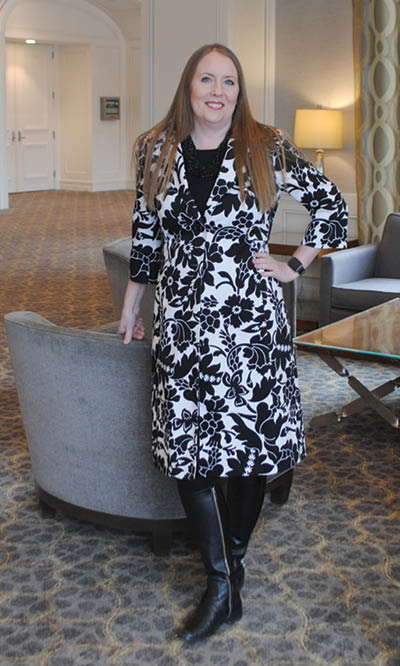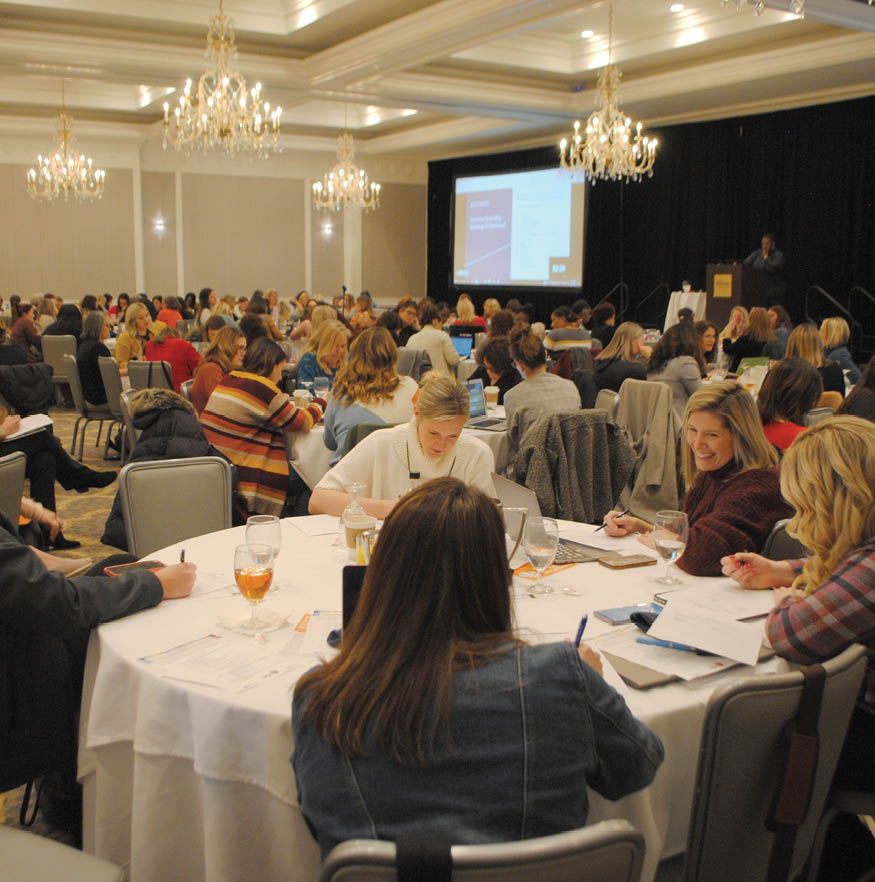Advocacy Agenda: March 2023

This year, the Ohio Association of Secondary School Administrators (OASSA) is celebrating its 100th anniversary. Throughout our history, our association has mirrored typical gender trends in secondary school leadership. Like the few other women working at the secondary level, I too had only worked with male administrators and for male administrators. That changed in 2020, when I was hired as the first woman to serve as associate executive director at OASSA, and I’m thankful for the opportunity to elevate female voices throughout my state and beyond.
It’s still the case today that men far outnumber women—by about three to one—among secondary school administrators in Ohio. That number hasn’t changed significantly in the three years that I’ve been in my position, but I do think some of the attitudes among and about women are changing. And I’m proud to have played a role in that in our state.
Earlier this winter, we hosted our fourth annual Women’s Leadership Conference in Columbus. When we organized the first one in 2020, I was still a high school principal in rural Southwest Ohio, and I served on the OASSA’s women’s leadership committee. We decided, as a group of women, that we should build a conference that would highlight the differences in the way that women lead and begin to better support future female leaders and encourage them to move into administrative roles at the secondary level.

Changing Attitudes Among Women
Even if the demographics of secondary school leaders haven’t shifted much since our first conference, I have seen that the women who currently hold leadership positions are becoming more intentional about what good mentorship looks like and are thinking about how those of us who moved into these positions can bring other women to the table.
I was a principal in middle and high schools for 14 years, and most of the time I was the only secondary female principal in my entire county. And to be honest, sometimes the women who were in leadership positions were not very nice to each other. There was a scarcity mentality, with this notion that there are only so many positions to go around, so there was little room for others. I’m happy to say that I have seen a shift in many parts of our state to reflect the idea that, “If I succeed, you succeed, and we all succeed together.”
It’s interesting that our first conference was held just before the start of the pandemic, because I think COVID really did bring into focus some of the leadership differences between women and men. At that time, a lot of people in leadership positions were just trying to hold things together given the extraordinary stresses we all faced. Before then, it wasn’t uncommon for us to think that all leaders had to be strong for everyone and rarely show emotion. There was this belief that you couldn’t handle the job if you showed too much emotion because you’ve got very volatile, high-stakes decisions to make at the secondary level.
It’s OK to Show Some Emotion
But what we’ve learned is that women need to feel comfortable in their own skin as leaders. If you’re an emotional person, show some of that emotion instead of clinging to the idea that you have to be strong and not share an authentic part of yourself. By doing so, you make it OK for your students and your teachers to do the same thing. Compassionate leadership has taken a front seat over the last couple of years, and our conference has made it clear that it’s a safe place to explore that.
It is also important to note the issues facing females who are racially diverse; their numbers in the administrative ranks are even lower. As an association, we’re trying to draw attention to that issue and figure out how to best support these leaders. One thing we discussed this year was “intersectionality” and understanding how the experiences you bring to the table will influence your leadership. It’s helpful for all women to recognize those differences and decide how they affect their daily interactions with the people they are leading.
Practical Advice for Aspiring Leaders
Right now, I struggle a bit with the feeling that we’re pointing at a problem, but we don’t have great solutions. But I also see some encouraging developments. One thing we’re doing is hosting a conference for aspiring leaders of all demographics. That’s where we can give much more practical advice on topics such as interviews, résumés, and networking. So, when we bring in teacher leaders and guidance counselors and whoever else at the secondary level interested in leadership opportunities, we can encourage leaders beyond just saying “apply and see what happens.”
We don’t have a long-term plan for solving the issue of hiring more female leaders, but there are more conversations about it. I do see more and more women wanting to talk about those opportunities and whether they might be appropriate for them. I think that’s where it starts.
On a personal level, serving in my position with OASSA has been very satisfying. When I served on the state board of directors for four years before taking this position, I saw the need to explore this issue, and I love that we’re getting to do that. The Women’s Leadership Conference has been great for bringing together female leaders and exploring more generally what good leadership looks like. My goal is to continue to elevate the voices of all school leaders and to advocate on their behalf.
Heather Powell is the associate executive director of the Ohio Association of Secondary School Administrators.
Sidebar: Conference Sessions
To meet the unique needs of female leaders and show them that the secondary leadership ranks are indeed attainable, we specifically design conference sessions to be empowering and inspiring. The following titles of previous sessions reflect one of the event’s most important themes: ensuring that the voices of women leaders—and aspiring leaders—are heard.
- “Self-Care and Families”
- “Moving From Perfectionism to Resiliency”
- “Cultural and Implicit Bias”
- “The Role of Mentorship”
- “You Can’t Pour From an Empty Cup”
- “Building Your Professional Network”
- “High Heels and High Standards”
- “Crucial Conversations”
